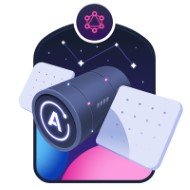Manage State in React Apps with Apollo Client and GraphQL
Learn how Apollo’s powerful cache improves data retrieval efficiency and enhances user experience. Master pagination, error handling, and network optimization with Apollo’s client-side GraphQL library. Explore advanced scenarios, modify the cache manually, and seamlessly integrate with REST APIs. Boost UI responsiveness with optimistic updates and efficiently manage data deletion. Utilize field policies, reactive variables, and cache redirect policies for optimal performance. Migrate from REST to GraphQL effortlessly and stay in sync with the backend through polling and subscriptions. Start your app quickly by syncing the Apollo cache with local storage.
At the core of a good client-side GraphQL library is a cache. The cache is very important for improving the efficiency of your data retrieval and providing your users with a clean user experience.
In this course, we’re going to see how Apollo’s powerful cache helps easily solve complex UI problems, such as pagination, handling loading and error states, optimistic updates, and minimizing network requests.
We’ll start from the basics, and look at how to make queries and mutations, but then we’ll look at how the cache is behind most of Apollo’s immediate benefits. We’ll explore in-depth how it works, how it stores data, and how we can manually modify it manually for advanced scenarios.
Even if your backend doesn’t fully support GraphQL yet, we’ll look at how to write GraphQL queries in your components that retrieve local client state under the hood – or that can even make REST API calls.
Course Content
Perform GraphQL queries using Apollo’s useQuery hook
Why have a client-side GraphQL cache?
Use fetch policies in Apollo to keep your queries fast and fresh with the latest data
Handle loading states for your GraphQL queries
Handle GraphQL query error states using Apollo
Use the RetryLink in Apollo to retry queries after an error
Make GraphQL mutations with the useMutation Apollo hook
Understand how Apollo stores data in its cache
Update the local cache automatically when making mutations
Optimise queries to ensure all entities are normalised in the Apollo cache
Handle item deletions in Apollo using refetchQueries
Manually modify the cache to remove deleted items
Use optimistic updates to build UIs that react immediately to user actions
Evict deleted items from the Apollo cache
Use fetchMore and merge field policies to dynamically load more items into a list
Use “read” field policies to query local client state
Use the readField helper to get the ID of items in read field policies
Use reactive variables to hold local client state in Apollo’s cache
Implement cache redirect policies to avoid slow network requests for new queries
Incrementally migrate from REST to GraphQL using the RestLink
Keep queries in sync with the backend by polling for new data
Subscribe to immediate live updates from your server
Append GraphQL subscription updates to existing queries
Provide quick app start-up times by syncing the Apollo cache with local storage
User Reviews
Be the first to review “Manage State in React Apps with Apollo Client and GraphQL”
You must be logged in to post a review.







There are no reviews yet.